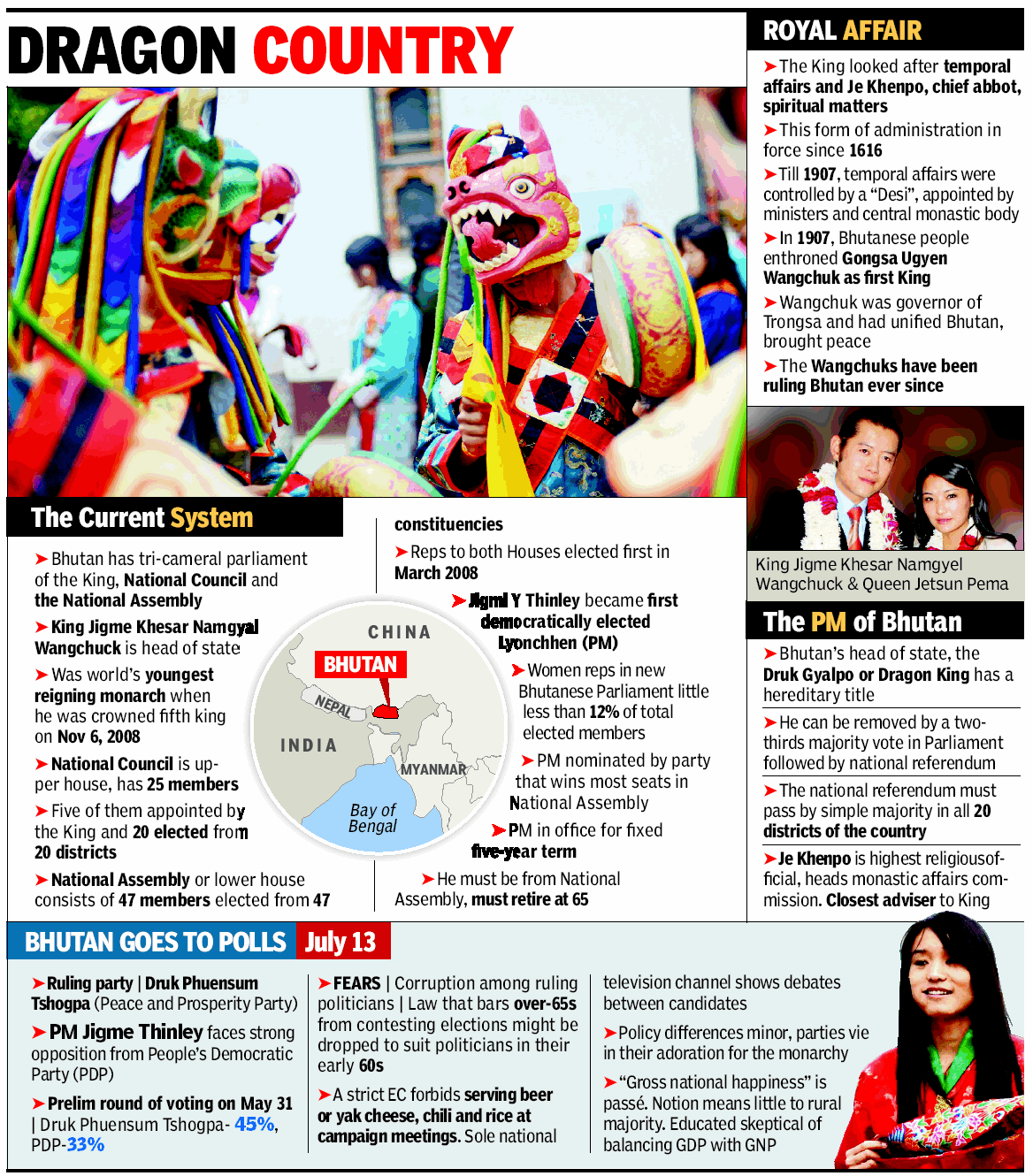Bhutan: Government
This is a collection of articles archived for the excellence of their content. Readers can send additional information, corrections, photographs and even Readers will be able to edit existing articles and post new articles directly |
Contents |
BHUTAN’S THREE GIANT LEAPS
FIRST BIG REFORM
Third King Jigme Dorji Wangchuk set up National Assembly (Tshogdu) in 1953
It elected members representing Gewogs (smallest administrative units)
This was legislating body, people discussed national issues
SECOND BIG REFORM
Setting up of Royal Advisory Council (Lodoe Tshogde) in 1963
Served as link between king, council of ministers and people
Liaison ensured projects’ timely implementation King Jigme Singye Wangchuk set up District Development Committee in 1981 (Dzongkhag Yargay Tshogdue)
In 1991, he set up Gewog Yargay Tshogchhung (block development committees)
THIRD BIG REFORM
The 1998 devolution of powers to cabinet ministers
King became head of state while PM head of govt
PM has council of ministers
Constitution signed in 2008
The system of governance: a chart
The Times of India 11/7/2013
See also
[[Bhutan: Government[[
